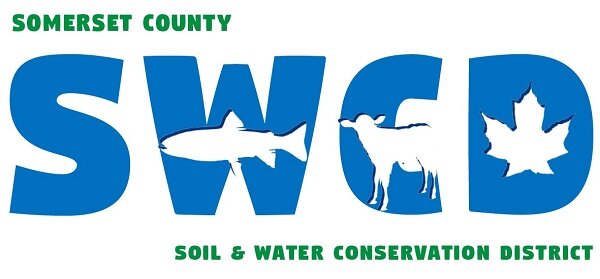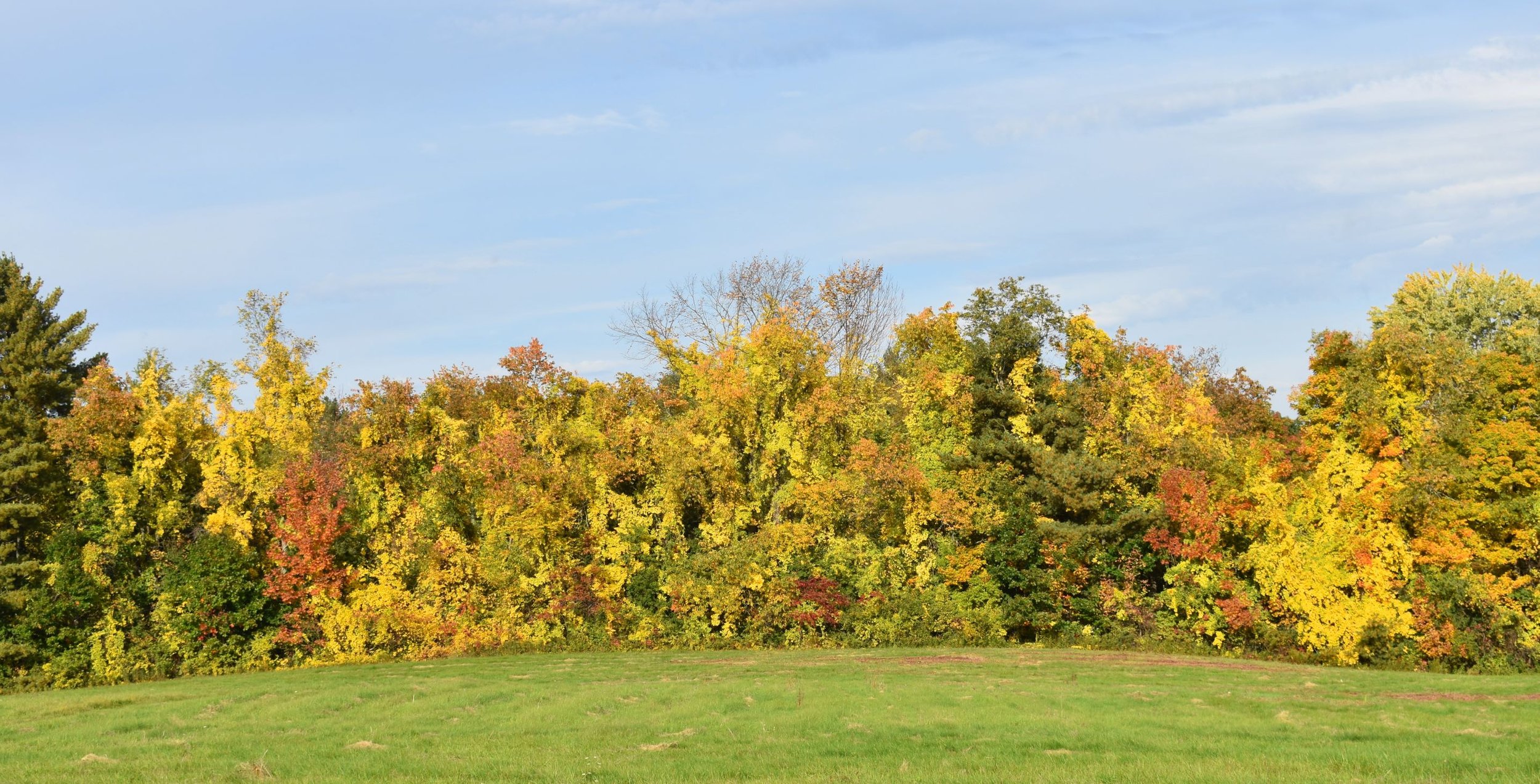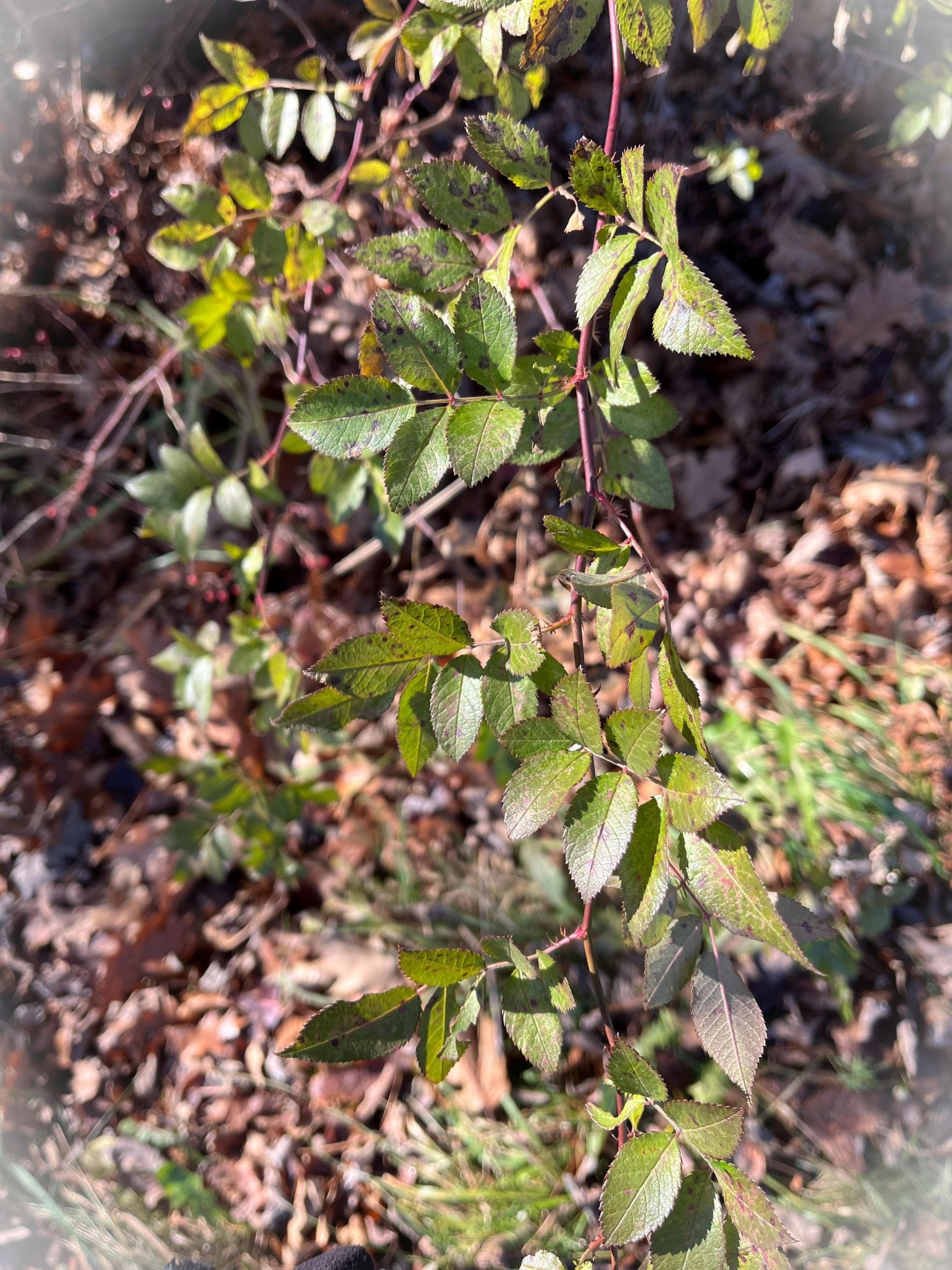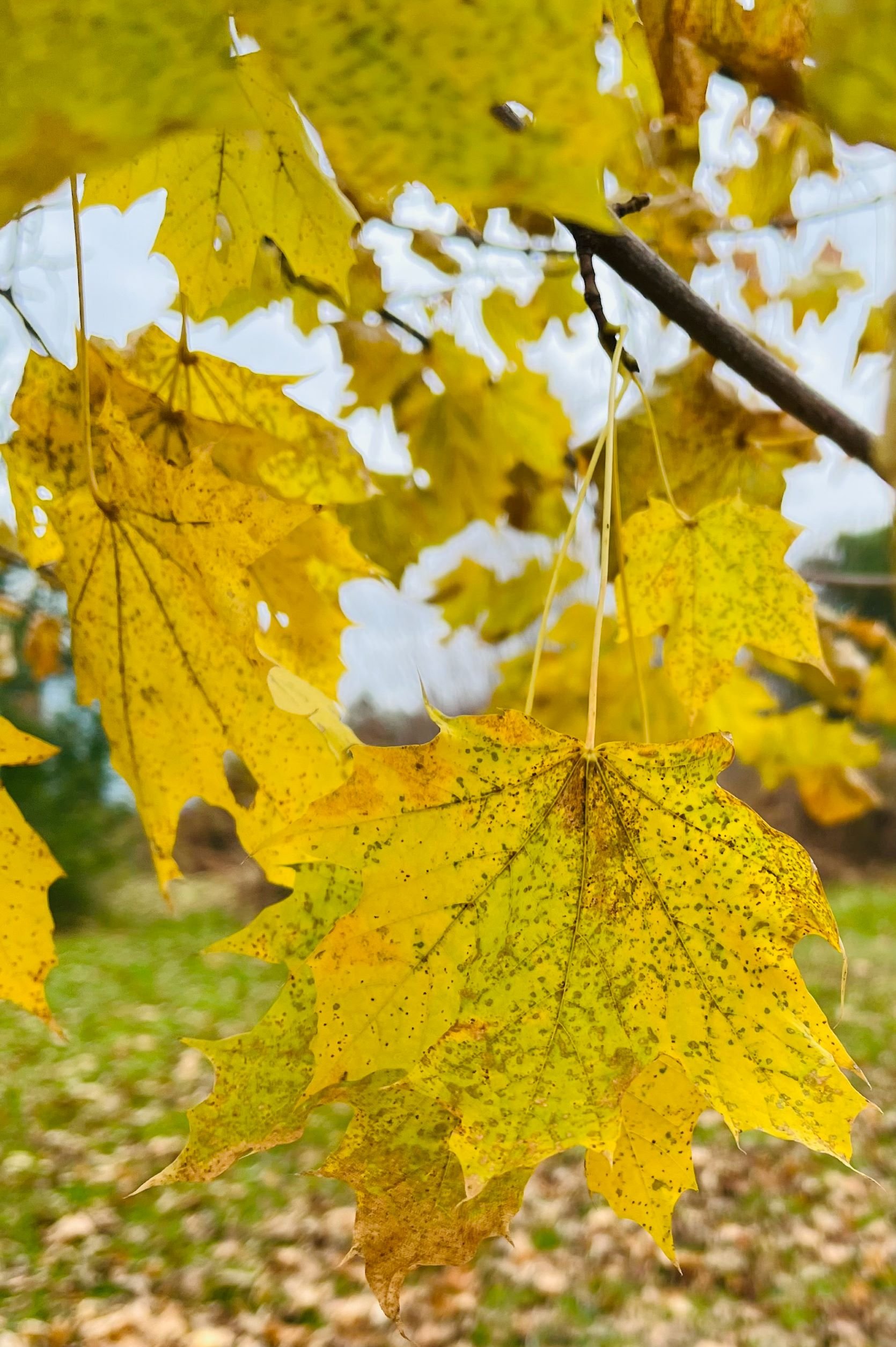Now Is the Time to Look for Invasive Plants
Late last month, I took a walkabout through an infrequently traveled corner of my woods, and guess what I found? The familiar yellow of a shrubby honeysuckle - a big one - shone like a beacon through the otherwise leafless stand. Not only was this unwelcome shrub a large, long-established one, I soon realized it was only a stone’s throw from one of our well-traveled trails. The thick foliage and tangled thicket of young red maples along the trail had long kept this uninvited one from view.
I was upset with myself for missing this specimen - I have, after all, completed many dozens of invasive plant surveys for clients around the state and have been actively managing invasive plants on my own property for several years. But the unfortunate find highlights two key things about invasive plants management:
Late fall is an ideal time to locate many invasive species. While most of our native plants have dropped their leaves, invasive species tend to hold on to their leaves longer into the season. Any foliage you spot in the woods right now is worth a close look; in many cases, you will find a troublesome invader such as shrubby honeysuckle, burning bush, or Norway maple. (Spring is also an excellent time, as many of the target species leaf out earlier than our natives. The first greenery in spring should always get a second look.)
Success requires vigilance. There are always more plants to find. If you have ever had invasives on your property, you likely have a seed bank in your soil that means new plants for years. Worse, invasive plants are so prevalent on the landscape now that new plants will creep onto your property every year as birds, human activity and other vectors bring the seed onto your land. Annual surveys to look for new plants are critical.
After cutting and treating that big old honeysuckle (using an herbicide applied directly to the freshly cut stem in accordance with label instructions), I invested several hours searching my property for more. I expected to find young shrubby honeysuckles, but there were more surprises in store.
Along the woodland edge, two young multiflora rose canes - a species I have not ever found on the property! Nearby, a knee-high shrubby honeysuckle amidst frost-killed spirea and other native plants. Along the road frontage - dozens of first-year honeysuckle, their leaves still green and standing tall among the wilted and frosted grasses and native vegetation. And in the back corner, a single Japanese barberry seedling stood out under the leaf-less alders.
click on each image for larger view, hover on image for caption/identification
What to look for:
Shrubby honeysuckle leaves stay green longer than native shrubs before turning a bright yellow after most native plants have dropped their leaves. Its abundance is stunningly evident this month. Look into most roadside woodlands and you will see an understory dotted - or blanketed - with this aggressive spreader. It is also easily spotted along roadsides, utility corridors and field edges this time of year. For local examples, you can visit these shrubs at Yankee Woodlot Demonstration Forest in Skowhegan and Weston Woods & Waters in Madison.
Look for the brilliant yellow foliage and orange berries of Asiatic bittersweet, and multiflora rose’s red fruit and arching canes, often in dense thickets. Both plants cause severe environmental damage by invading open fields, forests, wetlands, meadows, and backyards and crowding out native plants. And please don’t use these two species for wreaths and garlands.
The startling red you see in yards and landscaped areas are likely burning bush. Many of the photos included here are of specimens found on a short walk in the Capitol area of Augusta. Unfortunately, this species also spreads like wildfire in woodlands. This year, we found it in the Yankee Woodlot Demonstration Forest for the first time.
Japanese barberry’s green leaves darken and gain a reddish hue, and it can retain its red, tear-dropped shape berries long into the winter. The interior loop trail (blue) at Yankee Woodlot Demonstration Forest offers opportunity to study this plant up-close, but be sure to check yourself for ticks afterwards. This species is known to provide refuge for ticks.
Norway maples are easy to spot right now, still holding on to their yellow leaves. The majority of our native sugar maples have dropped their leaves by November. At several locations near my home and in Augusta, I observed a great many Norway maple saplings in the woods adjacent to large, established Norways planted years ago in yards or commercial settings.
Japanese knotweed vegetation has been killed by the frost, but the browned canes persist through winter. You will commonly see these along roadsides and disturbed areas.
Next steps:
When you find invasive plants this month, make note of the locations so that you can find them again next year. Young seedlings can be hand-pulled before the ground freezes, but larger specimens are better left until a new growing season. Each species requires slightly different management for greatest success. Take the winter to research and learn so that you are well positioned for success come spring. Somerset County SWCD is available to provide information and assistance. We also recommend the videos, fact sheets and management calendars found at Penn State Extension.
Why do all this?
Invasive plants have the potential to suppress tree recruitment and growth in forests, crowd out beneficial native plants, reduce wildlife habitat quality, and generally be a nuisance during property maintenance. In addition to out-competing our native trees, shrubs and wildflowers, nonnative invasives can create monoculture stands devoid of biodiversity. They can overtake productive farmland and forests. Some nonnative invasive plants, such as black locust, even change the local soil chemistry, further altering their surroundings. A chemical compound found in the leaves, fruit and bark of invasive buckthorn is toxic to amphibian embryos, disrupting the development of eggs in vernal pools. In short, invasive plants cause tremendous damage and put our native ecosystems at risk. Whether you love the woods for their habitat values, timber values, or recreational values, invasive species should be a top management concern.
Text and all photos jbrockway, except barberry-bittersweet jdembeck














